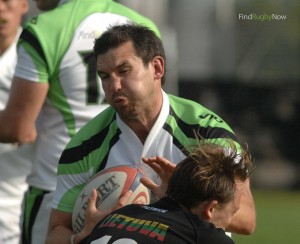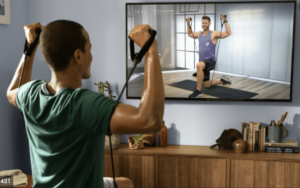 Reading a recent discussion on another rugby forum, I’ve been forced to rethink my attitude to how I, as a coach of young players, want to approach the contact areas of the game. This will involve looking carefully and honestly at mistakes I’ve made in the past, as well as shifting my focus from trying to develop players who are ‘hard’ to players who are effective while continuing to enjoy playing.
Reading a recent discussion on another rugby forum, I’ve been forced to rethink my attitude to how I, as a coach of young players, want to approach the contact areas of the game. This will involve looking carefully and honestly at mistakes I’ve made in the past, as well as shifting my focus from trying to develop players who are ‘hard’ to players who are effective while continuing to enjoy playing.
First of all, I love watching hard contact rugby and when big tackles go in, or there’s a huge shove on in a scrum or some ferocious rucking, that’s great. Speed and physicality are two of the aspects of the international/elite club game that make it so rewarding to watch.
I wouldn’t want to see that part of the game watered down and provided players remember to stay within the Laws, there’s a lot of enjoyment to be had from this aspect of rugby.
Certainly the 6 Nations and other elite competitions would be the poorer if the game were less physically abrasive, and it’s surely no accident that the most physically impressive and intimidating side in world rugby has also been consistently the best side and the most exciting to watch over the last 20 years.
One of the things I don’t like much though, is how the language of the game has changed when describing the physical confrontation: a tackle is now almost always a ‘hit’ and we also hear of players being ‘smashed’, ‘creamed’, ‘dumped’ and ‘owned’ in the tackle. When you hear BBC commentators using these terms, you know they’ve been adopted as official parlance, so it surely won’t be long before the truly awful ‘man-shamed’ is being used by coaches up and down the land.
Now I know some of my readers will be saying “So what? It’s a man’s game isn’t it?” and indeed to cope with the game you have to ‘man up’ on the pitch. However, the use of these terms suggests to me a certain level of flippant contempt for the opponent that’s at odds with rugby’s core value of respect. It also serves to detach players from the consequences of their actions, so they charge ever more recklessly into contact without worrying about the damage they are doing to fellow-players.
It seems that the primary aim of most international tackles is now to hurt and intimidate the opponent rather than just to stop him running, and only the superb physical condition of top players prevents a rash of injuries in every game. Even so, the cumulative effect of repeated high-impact collisions is responsible for massive physical damage to players, and the stats for injury absence in the Aviva Premiership bear this out.
Lower down the pyramid this brings problems. Players down at Tier 4 and below are also coached to play the game this way (and I know this from listening to what coaches shout to their players from the touchline).
The problem is that as part-time players, many of the guys at this level don’t get the fitness and conditioning work required to cope with these demands.
When you start to be injured too often and have to have regular time off work to recover from rugby injuries (including those picked up in training), your employer will understandably get twitchy. Players might ultimately have to decide between rugby and a job, and inevitably given this choice they quit the game.
My real concern though is the effect on junior players, and again having coached and refereed junior rugby up to U15s I hear what coaches and players say during matches – it’s clear that players as young as 9 and 10 are being encouraged by coaches to put in big hits, not always legally.
Physicality has been promoted at the expense of technique and this can be very damaging. I’ve had to speak to the forwards in an U11 game when as they packed down for the first scrum, the visiting hooker was exhorting his colleagues to put in a ‘massive hit lads, let’s smash ’em off the park’. I hear coaches calling out to key players to make ‘dominant’ tackles and to ‘dump him backwards’ and have had to warn players about potentially dangerous tackles even in U10 rugby. In an U12 game my older son was tackled round the neck as he attempted to score, and not only was the perpetrator not penalised (bad refereeing), but he was clapped on the back by team mates and cheered by parents and coaches for a ‘great hit’ (as opposed to being picked up for a crap tackle).
In a recent conversation with an orthopaedic consultant, I was told that the limb and joint injuries he now sees in rugby players are similar to injuries he sees in motor-cyclists hit by cars. This was when we were discussing my son’s torn ACL (anterior cruciate ligament), picked up at the age of 11, through being hit ridiculously hard from the side while his studs were caught in the ground. There was nothing illegal about the tackle, and the injury was down to bad luck as much as any other factor, but the tackler had stepped over the line from committed (which is desirable in a tackle) to ‘hard’. The end result is that after a partial recovery, my son has had to give up the game at the age of 13 and will need an operation once he stops growing, after which he may or may not play again.
So the message to coaches, especially of children, is that while commitment in contact is essential, excessive aggression is not.
Kids, especially teenage boys, are naturally aggressive and don’t need to be encouraged to be more so. Junior coaches and refs have a duty of care to all players, not just their own, and need to remember that the players being smashed don’t necessarily have the strength and conditioning to withstand huge impacts.
With the very youngest players, or with anyone new to the game, we also need to consider the emotional impact of being on the end of a huge hit. Even if there is no physical injury, being unceremoniously clattered by someone bigger, heavier and nastier than you can induce feelings of fear and humiliation, neither of which is conducive to enjoyment of the game. This will only be made worse if they then hear howls of approbation from the opposition coaches and parents on the touchline.
The young players in our care are generally playing for enjoyment and to be part of a team, not with any serious ambitions to play top-flight rugby, so there’s no need to try and produce miniature internationals. Those of them good enough to be picked up through the representative system will develop a harder edge to their play through having to compete at a higher standard, and this will benefit them and their club/school sides. For the less developed players, who aren’t able to give the same level of physical commitment, we risk ruining the experience of rugby for them if we set expectations for all the team to tackle hard and be physically aggressive and dominant.
But the key thing to bear in mind is that what’s great to see at international level, is potentially dangerous – sometimes catastrophically so as in the case of Nathan Cubitt – http://www.nathancubitt.co.uk/ – for youngsters. So this coming season, please remember that the safety and well-being of all players comes before the satisfaction of seeing a big hit go in. If we promote the good tackle ahead of the big hit, we’ll have a safer, happier game for all participants.








 When most people hear the word “Peloton” they think of an expensive black bike with shiny red buttons and that controversial commercial where the husband gifted his wife a Peloton for Christmas.
When most people hear the word “Peloton” they think of an expensive black bike with shiny red buttons and that controversial commercial where the husband gifted his wife a Peloton for Christmas. If the app interests you, Peloton is currently offering a 30 day FREE TRIAL, so why not give it a try? Check it out
If the app interests you, Peloton is currently offering a 30 day FREE TRIAL, so why not give it a try? Check it out 

 This article would not be complete, however, if we did not acknowledge some of the delivery issues that have been plaguing Peloton over the last year. Most of the delivery issues seem to affect U.S. deliveries, however, the UK deliveries have been affected as well.
This article would not be complete, however, if we did not acknowledge some of the delivery issues that have been plaguing Peloton over the last year. Most of the delivery issues seem to affect U.S. deliveries, however, the UK deliveries have been affected as well.







